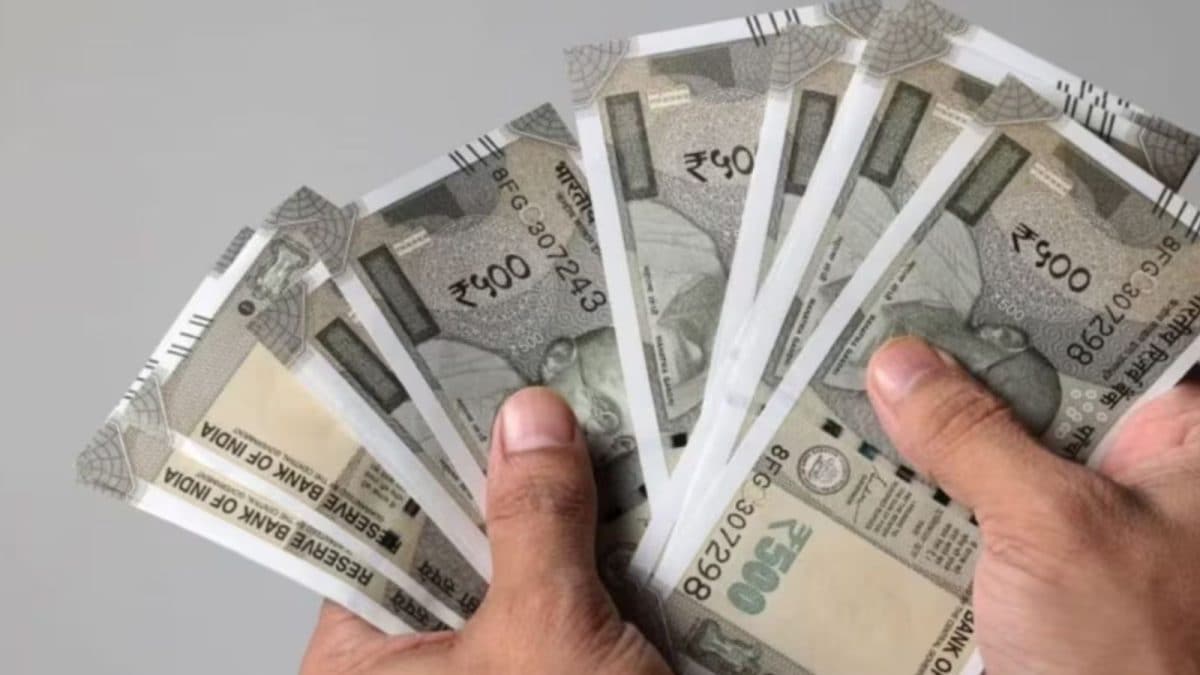
As dual-income households continue to rise, urban lifestyles are increasingly steering away from home-cooked meals towards convenient dining options. This growing reliance on ready-made food has paved the way for a quiet revolution in small-scale entrepreneurship – the rise of curry points, an affordable and highly profitable business model that is transforming street-corner kitchens into steady monthly earners of up to Rs 1 lakh. (AI-Generated Image)
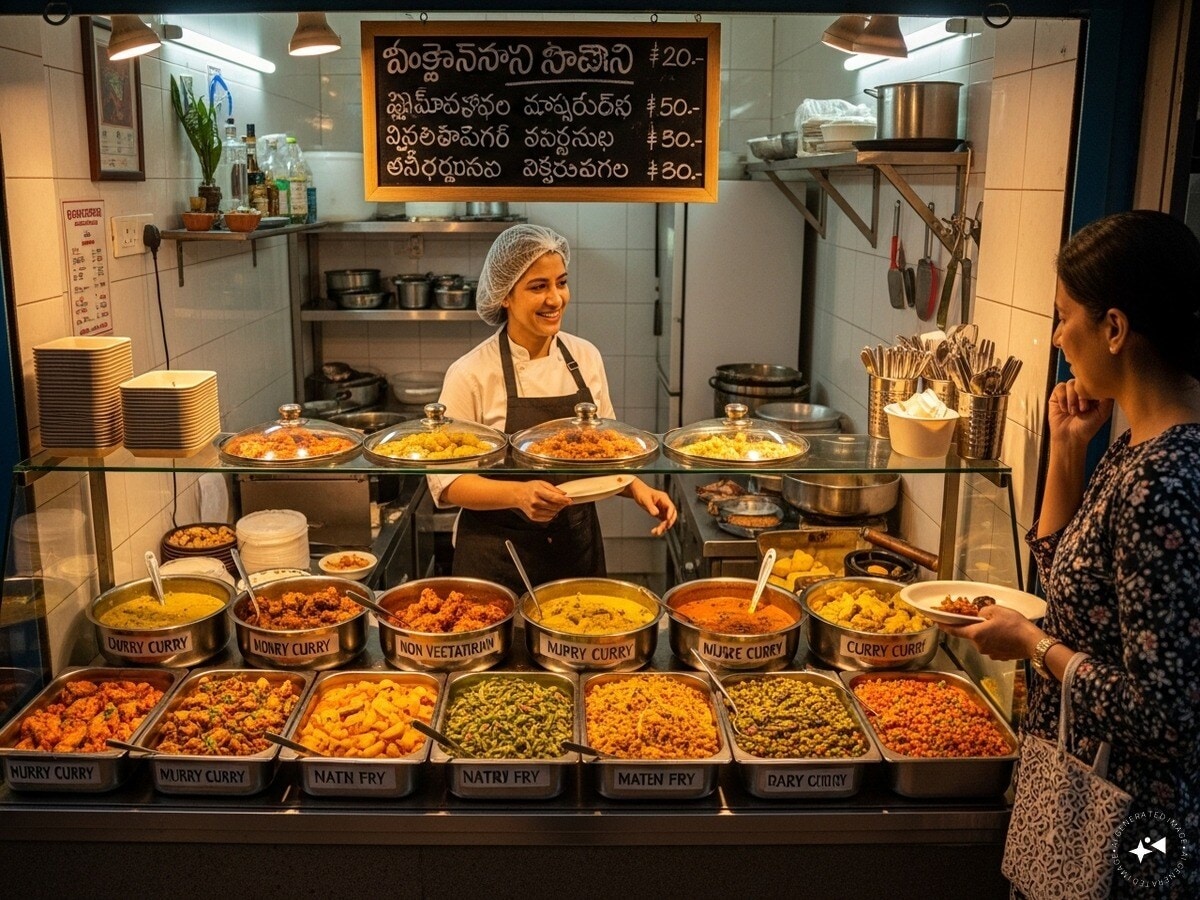
Across metropolitan and tier-II cities, more couples are working full-time jobs, leading to reduced home cooking. With middle-class and affluent families turning to nearby eateries, tiffin services, and online food delivery, the humble curry point, offering home-style curries at pocket-friendly prices, is fast emerging as a dependable source of income for small investors. (AI-Generated Image)
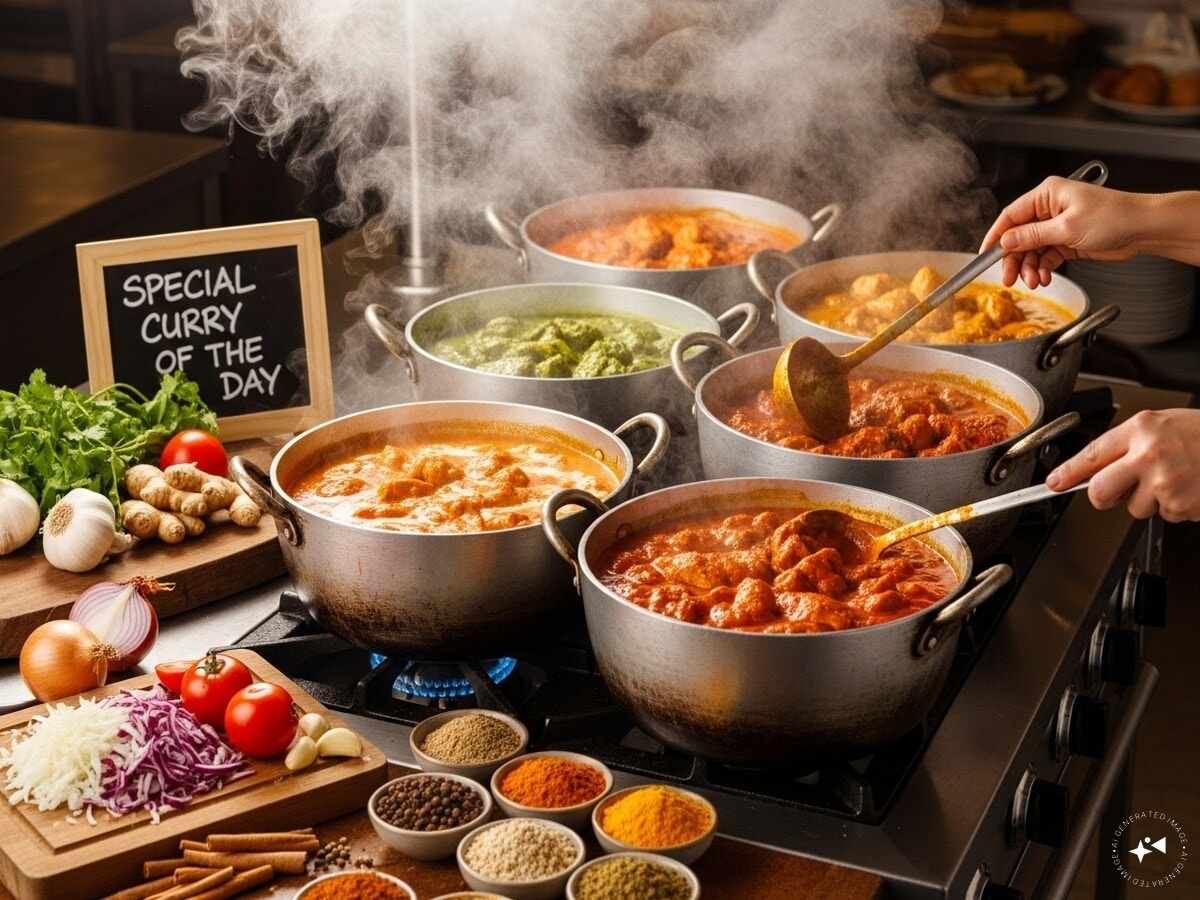
Setting up a curry point requires a modest investment, often less than Rs 50,000. A small rented shop, basic utensils, and a gas connection are enough to begin. With a menu of about 10 dishes, typically six vegetarian and four non-vegetarian curries, daily earnings can reach between Rs 3,000-Rs 4,000. (AI-Generated Image)
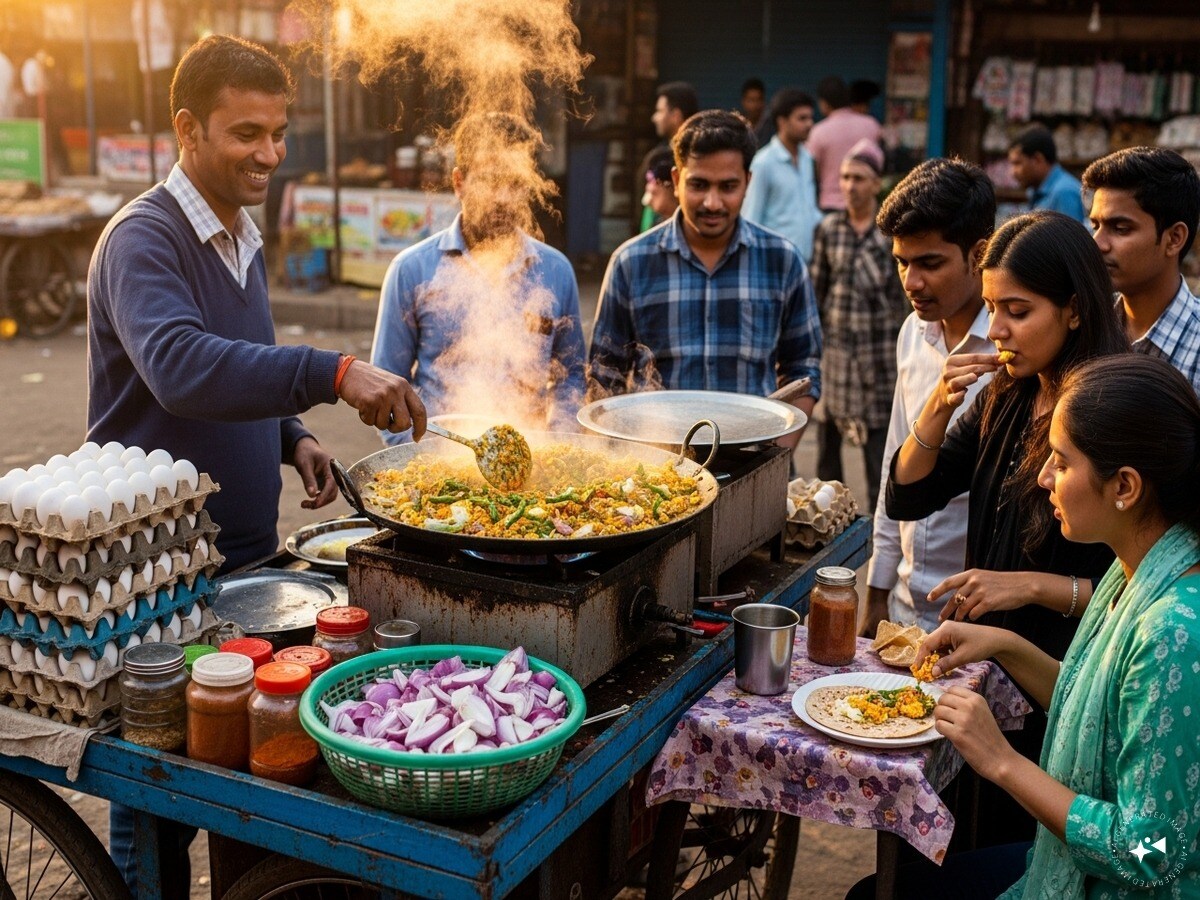
Consider the economics: preparing 4 kg of chicken daily costs around Rs 1,200 (including ingredients and cooking gas), while the same quantity, sold at Rs 700 per kg, earns Rs 2,800, yielding a net profit of Rs 1,600. Similarly, egg burji, a staple among bachelors and office-goers, costs roughly Rs 10 to prepare but sells for Rs 30 per 100 grams, offering a daily profit of around Rs 600 from 3 kg of sales. (AI-Generated Image)
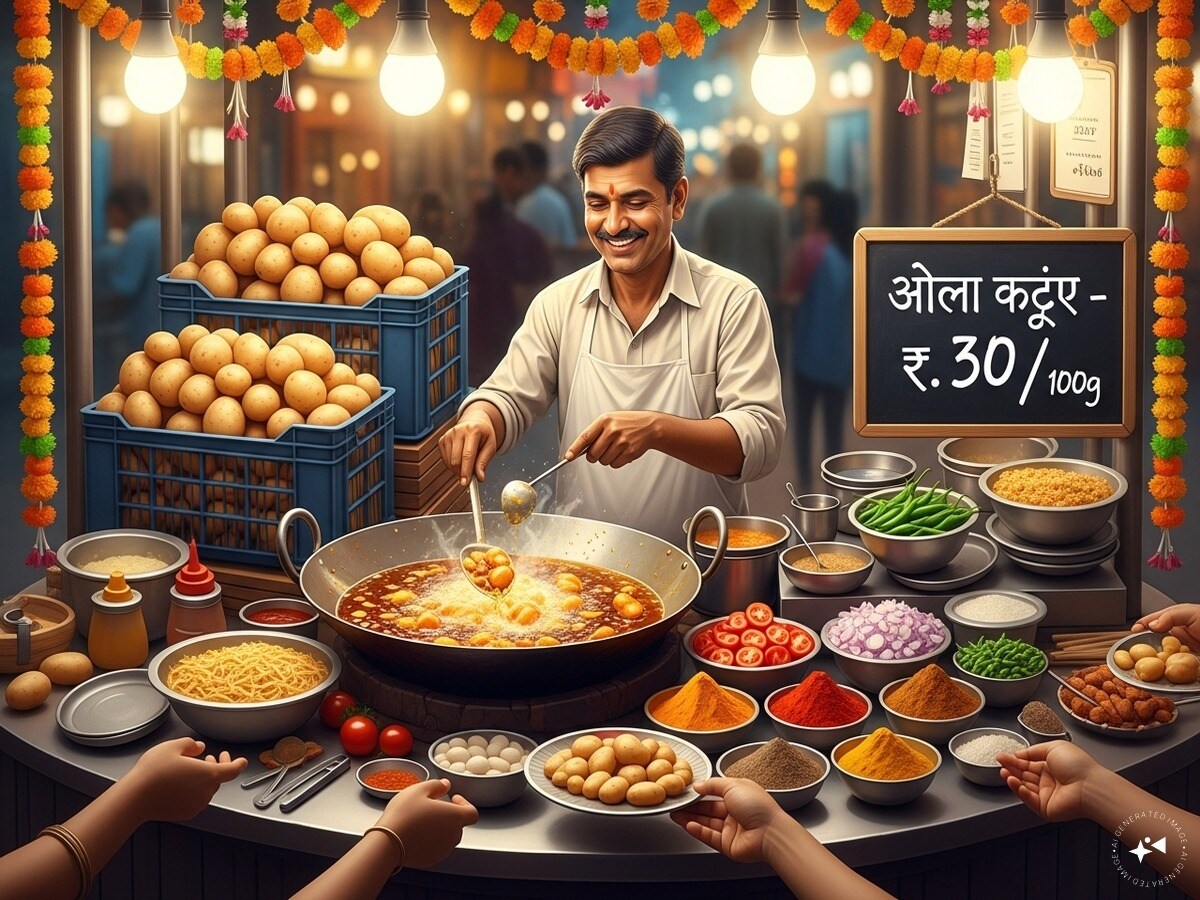
Vegetarian dishes such as potato fry add further margins. 1 kg of potatoes costs Rs 40, and the total preparation cost for 4 kg comes to about Rs 300. Sold at Rs 30 per 100 grams, that batch brings in Rs 1,200, resulting in a profit close to Rs 900. Combining the profits from chicken, eggs, and vegetables, daily earnings can exceed Rs 3,000, even after accounting for unsold portions. (AI-Generated Image)
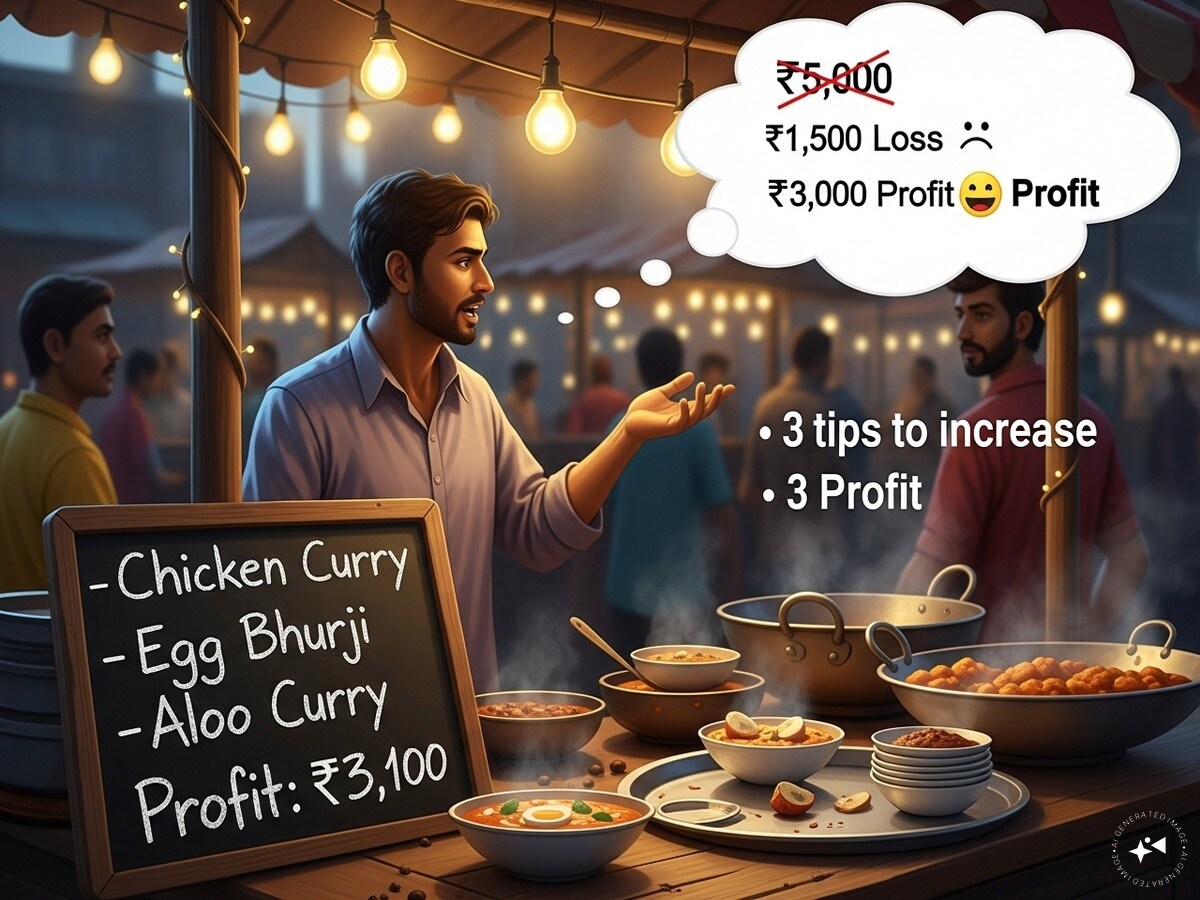
Entrepreneurs are further amplifying their profits through a few smart additions. Setting up a biryani corner within the same space attracts larger crowds. A single chicken biryani costs about Rs 80 to prepare and sells between Rs 120- Rs 150, generating profits of up to Rs 2,000 a day from 50 plates, even after accounting for potential leftovers. (AI-Generated Image)
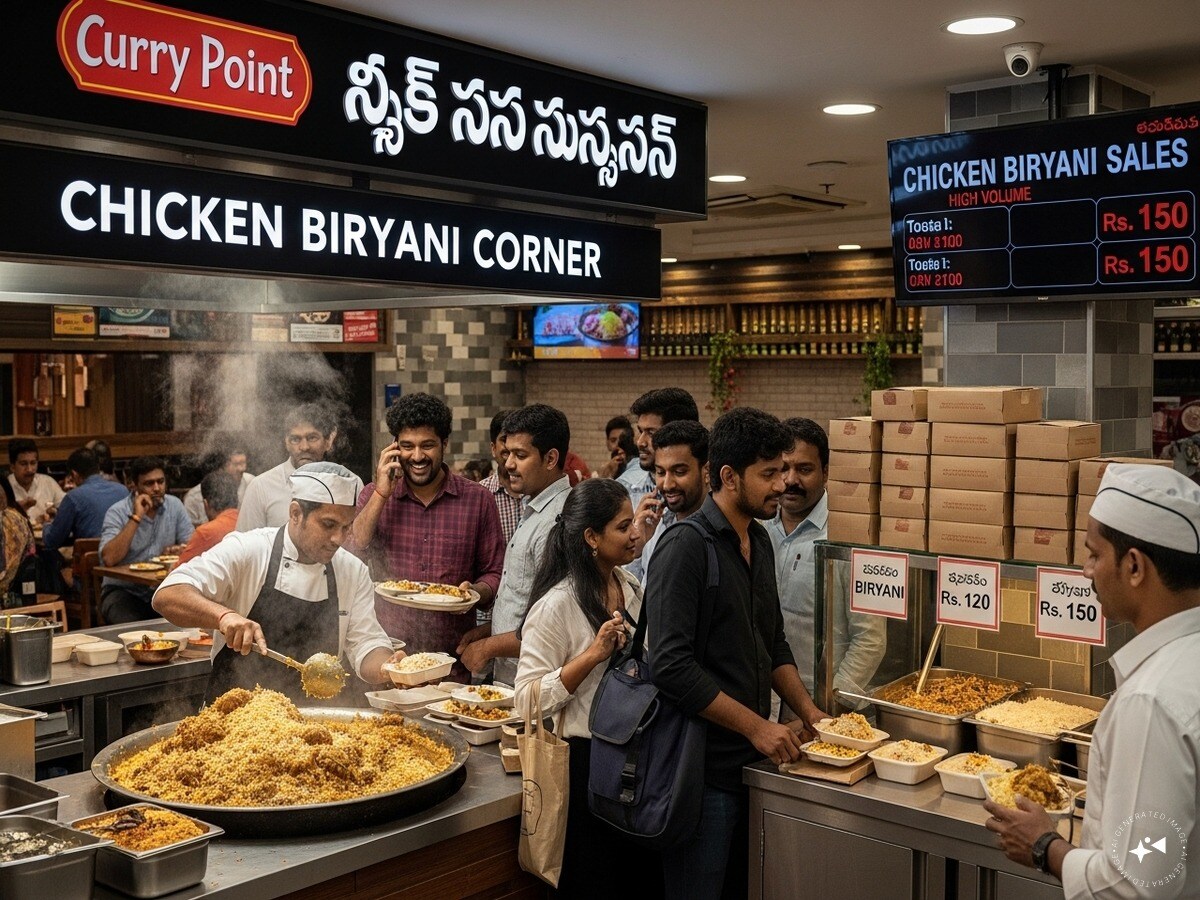
Adding fresh rice, chapatis, or parathas to the menu also helps increase footfall, particularly among single professionals who seek affordable, complete meals. Offering chutneys or buttermilk as accompaniments encourages customers to eat more rice, reducing the need for multiple curries while subtly increasing margins. (AI-Generated Image)

Meal parcels for takeaway customers, typically including rice, four curries, and buttermilk, ensure minimal wastage. Any leftover curry from the day’s sales can be efficiently repurposed, keeping the operation cost-effective and sustainable. (AI-Generated Image)

While the business promises good returns, regulatory compliance is mandatory. Entrepreneurs must secure a Food Safety and Standards Authority of India (FSSAI) registration, available online at foscos.fssai.gov.in, along with a local health trade license from the municipal corporation (such as MCD or MBMC). (AI-Generated Image)

Experts caution that while a well-managed curry point can yield substantial profits, success depends on maintaining food quality, hygiene, and consistency. As with any venture, risks remain, from fluctuating raw material costs to customer retention challenges. This business model, though simple, reflects India’s evolving food economy, where convenience and taste intersect profitably at the smallest corners of its bustling cities. (Disclaimer: This article is for informational purposes only. Readers are advised to conduct independent research before making any investment decisions.) (AI-Generated Image)

